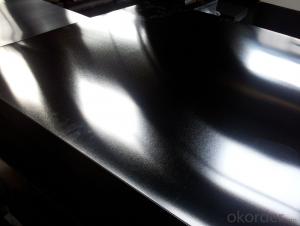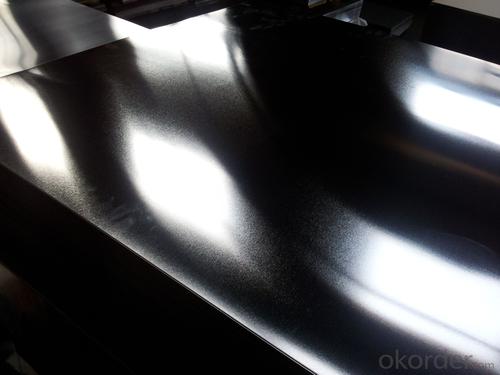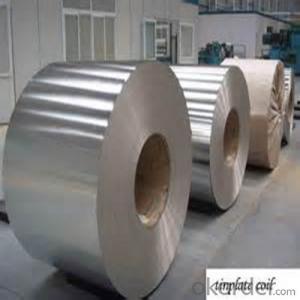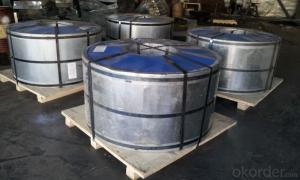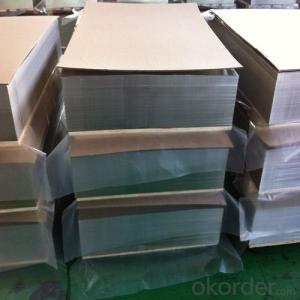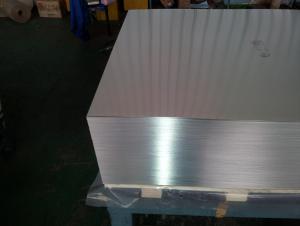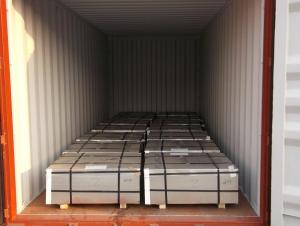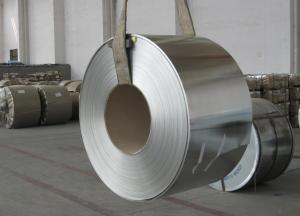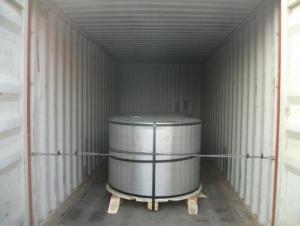Prime Quality Tinplate and Tin Free Steel
- Loading Port:
- Shanghai
- Payment Terms:
- TT OR LC
- Min Order Qty:
- 25 m.t.
- Supply Capability:
- 25000 m.t./month
OKorder Service Pledge
OKorder Financial Service
You Might Also Like
Specification
1.Structure of Prime Quality Tinplate and Tin Free Steel Description
Tin Free Steel (TFS) is thin black plate with two coats; one of metal chrome film and the other of chromium oxide. TFS is ideal for the manufacturing of crowns, container ends & shallow drawn cans etc. TFS is also known as Chromium coated steel.
2.Main Features of the Prime Quality Tinplate and Tin Free Steel
Chromium coated
Corrosion Resistant
Easier to recycle.
Sulphur Blackening Resistance: TFS has sulphur resistance properties, which can be used for canning protein- rich food such as fish.
Filiform Rust Resistance: Filiform is superficial corrosion of the base metal. TFS has a superior base metal which makes it corrosion resistance.
TFS should be Lacquered / Coated to prevent rust in humid condition.
Internal Coating / Lacquering can be avoided in the case of TFS used to store motor oil or cooking oil.
3.Prime Quality Tinplate and Tin Free Steel Images
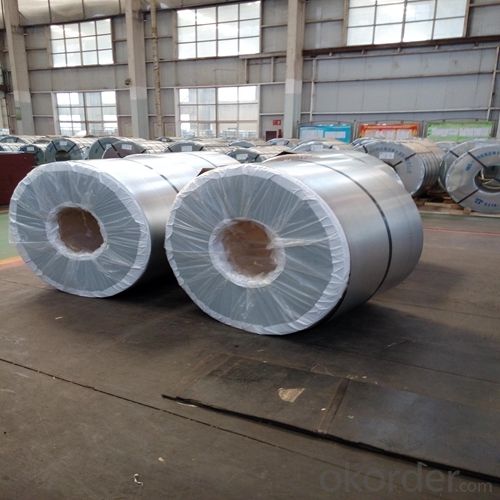

4.Prime Quality Tinplate and Tin Free Steel Specification
Standard: ISO 11949 -1995, GB/T2520-2000,JIS G3303,ASTM A623, BS EN 10202
Material: MR,SPCC
Thickness:0.15mm - 0.50mm
Width: 600mm -1150mm
Temper: T1-T5
Annealing: BA & CA
Coil Inner Diameter: 508mm
Weight: 6-10 tons/coil 1~1.7 tons/sheets bundle
Passivation:311
Oil: DOS
Surface: Finish,bright,stone,matte,silver
5.FAQ of Prime Quality Tinplate and Tin Free Steel
-What is MOQ?
Our MOQ would be 25 tons.
- Do you only have prime quality?
We can supply both prime and second quality.
- Q: What are the common storage and handling requirements for tinplate?
- Common storage and handling requirements for tinplate include keeping it in a dry and clean environment to prevent corrosion, avoiding exposure to extreme temperatures, and ensuring proper stacking to prevent damage to the material. It is also important to handle tinplate with care to avoid any bending or scratching that could affect its quality and appearance.
- Q: What are the different ways to display tinplate containers?
- There are several ways to display tinplate containers, including arranging them on shelves or countertops, using display stands or racks, grouping them together in a decorative arrangement, or hanging them on walls or hooks.
- Q: How does tinplate contribute to the safety of automotive components?
- Tinplate contributes to the safety of automotive components in several ways. Firstly, tinplate is highly resistant to corrosion, which helps protect automotive components from rust and deterioration. This ensures that critical parts, such as brake lines or fuel tanks, remain in good condition, reducing the risk of failure and potential accidents. Additionally, tinplate's strength and durability make it suitable for impact-sensitive components, like car body panels or engine parts, providing an extra layer of protection in case of collisions. Lastly, tinplate's ability to withstand high temperatures and its fire resistance properties make it an ideal material for automotive components that may be exposed to extreme heat or fire hazards, further enhancing safety in the event of accidents or emergencies.
- Q: What are the main differences between tinplate and tinplate laminates in terms of barrier properties?
- Tinplate and tinplate laminates differ in terms of barrier properties primarily due to their composition and structure. Tinplate is a steel sheet coated with a thin layer of tin, which provides excellent corrosion resistance but limited barrier properties against gases and moisture. On the other hand, tinplate laminates consist of a tinplate base combined with additional layers, such as plastic or paper, which significantly enhance the barrier properties. These laminates offer improved resistance against gases, moisture, and light, making them suitable for packaging applications requiring higher protection and preservation of the contents.
- Q: How to quickly open the bottle?
- Put the tins of canned fruits soaked in hot water for 3-5 minutes, so that the tank gas temperature rises, the pressure is increased, which is the principle of expansion and contraction. Turn the canned fruit bottle upside down for a while. When the liquid in it breaks down the vacuum inside and outside, tap it in the bottom with your palm and pull it gently. It's easy to pull apart.
- Q: What are the main challenges in tinplate canning process?
- There are several main challenges in the tinplate canning process. One of the challenges is ensuring the integrity of the cans, as any defects or weaknesses in the tinplate can compromise the safety and quality of the canned product. Another challenge is achieving a consistent and tight seal on the cans, as improper sealing can lead to leakage and spoilage. Additionally, maintaining hygiene and preventing contamination during the canning process is crucial to prevent the growth of bacteria or other microorganisms. Finally, managing the overall efficiency and productivity of the canning process while meeting high-quality standards can be a challenge, as it requires careful coordination and optimization of various factors such as production speed, temperature control, and quality control measures.
- Q: Can tinplate be painted?
- Yes, tinplate can be painted.
- Q: Can tinplate packaging be used for cosmetic products?
- Yes, tinplate packaging can be used for cosmetic products. Tinplate is a commonly used material in the packaging industry due to its durability, versatility, and ability to protect the contents from external factors such as light, moisture, and air. It can be shaped into various sizes and designs, making it suitable for packaging cosmetics like creams, powders, and lip balms. Additionally, tinplate packaging can also be customized with attractive designs, making it visually appealing for cosmetic products.
- Q: How is tinplate tested for quality and performance?
- Tinplate is tested for quality and performance through various methods such as visual inspection, thickness measurement, adhesion testing, corrosion resistance evaluation, and mechanical property analysis. Visual inspection involves assessing the surface for any defects or irregularities. Thickness measurement ensures the tin coating meets the required standards. Adhesion testing checks the bond strength between the tin and base metal. Corrosion resistance evaluation examines the tinplate's ability to withstand corrosion. Mechanical property analysis includes tests for strength, hardness, ductility, and formability to ensure it meets the desired performance requirements.
- Q: How does tinplate contribute to the circular economy in the steel industry?
- Tinplate contributes to the circular economy in the steel industry by being a highly recyclable material. It can be easily recovered and reused, reducing the need for extracting new resources. Additionally, tinplate's durability and corrosion resistance properties make it suitable for multiple uses, further extending its lifecycle and minimizing waste.
Send your message to us
Prime Quality Tinplate and Tin Free Steel
- Loading Port:
- Shanghai
- Payment Terms:
- TT OR LC
- Min Order Qty:
- 25 m.t.
- Supply Capability:
- 25000 m.t./month
OKorder Service Pledge
OKorder Financial Service
Similar products
Hot products
Hot Searches
Related keywords
